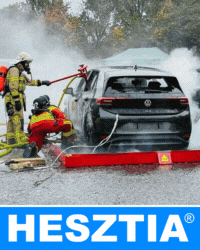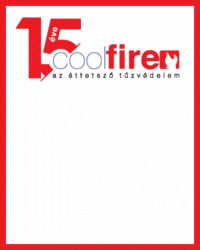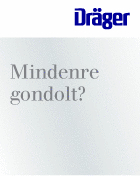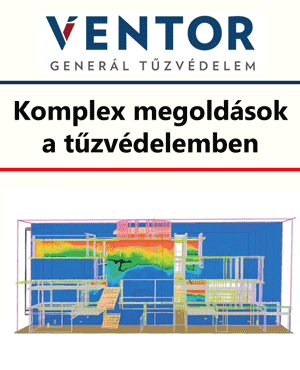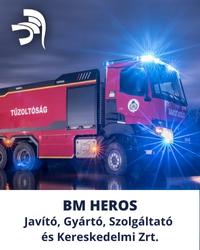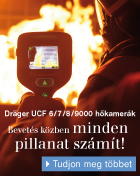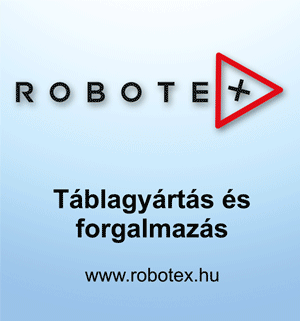III. Tűzvédelmi Mérnöki és Katasztrófavédelmi Nemzetközi Tudományos Konferencia – absztraktkötet2023. június 01. 12:40 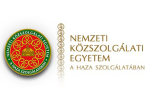 2023 áprilisában harmadszor került megszervezésre a Tűzvédelmi Mérnöki és Katasztrófavédelmi Nemzetközi Tudományos Konferencia, amelyhez kapcsolódóan az előadásokat összefoglaló konferenciakötet, az ún. Book of Extended Abstracts (ISBN 978-615-01-8104-2) most letölthető honlapunkról. 2023 áprilisában harmadszor került megszervezésre a Tűzvédelmi Mérnöki és Katasztrófavédelmi Nemzetközi Tudományos Konferencia, amelyhez kapcsolódóan az előadásokat összefoglaló konferenciakötet, az ún. Book of Extended Abstracts (ISBN 978-615-01-8104-2) most letölthető honlapunkról.
Az angol nyelvű konferenciakötet (Book of Extended Abstracts ISBN 978-615-01-8104-2) letöltéséhez kattintson ide.
Click here to download the Book of Abstracts (ISBN 978-615-01-8104-2)
Attention! You can browse the whole 3rd International Scientific Conference on Fire Engineering and Disaster Management here.
Table of Contents
Section A – Fire engineering
Subsection 1
Chair: Ferenc Varga, Co-chair: Ágoston Restás
- Éva Gyöngyössy: Fire safety of cables in oxygen-rich environment.
- Kostiantyn Afanasenko - Serhii Zimin: Parameters of heat exchange during the operation of the biogas complexes flare stack.
- Volodymyr Lypovyi - Harkavyi Andrii: Investigation of the thermal effect of the jet washing up liquid to oil sediments tank.
Subsection 2
Chair: Gyula Vass, Co-chair: Zsuzsanna Kerekes
- Wolodymyr Oliinik – Olesya Slavhorodska: Experimental Determination of the Parameters of the Liquid Infiltration into the Sand.
- Alexandra Végső: The transportation of hydrocarbons and fire risks
- Péter Pántya: Engineering design results for new Hungarian fire-fighting vehicles.
Section B – Fire protection
Subsection 1
Chair: Mariusz Feltynowski, Co-chair: Gergő Érces
- László Bodnár: New challenge of wildfires in Hungary
Fires at Wildland - urban Interface
- Dóra Edelmann: The significance of john von neumann's theories in contemporary fire protection
- Gergő Érces - Sándor Rácz - Gyula Vass - Ferenc Varga: Robustness of the fire safety network in buildings.
Subsection 2
Chair: Lajos Takács, Co-chair: József Hesz
- Máté Fodor - Sándor Rácz: The status and potential for improvement of on-scene first aid skills of intervention firefighters and the importance of disaster medic training
- Marek Hodálik - Danica Kačíková - Péter Pántya– Sándor Rácz - Gergő Érces: Gasoline as a fire accelerator – weathering process of residues
- Kristóf Holczer – Péter Pántya – Rudolf Jambrik: Investigation of firefighting interventions, techniques and saving of museum values in the event of fires in cathedral and church buildings. In the crosshairs: the fire at Notre-Dame.
Subsection 3
Chair: Linda Makovicka Osvaldova, Co-chair: László Teknős
- Levente Lőrincz: Household fires and their prevention.
- Raphela Tlou: Fire safety management in the artificial intelligence era in developing countries.
- Benjamin Hozer – Lajos Kátai-Urbán – Réka Magdolna Rácz Kirovné –Ferenc Varga: Fire hazard risks at municipal landfill sites.
Section C – Firefighting and rescue operation management
Subsection 1
Chair: Andrea Majlingova, Co-chair: Péter Pántya
- Eszter Bognár – Péter Pántya: Volunteer firefighting associations abroad and in Hungary.
- Anett Dobó: Cooling interventions for firefighters: to increase efficiency and concentration.
- László Farkas - Sándor Rácz: Examining the physical abilities of firefighters.
Subsection 2
Chair: Danica Kacikova, Co-chair: Sándor Rácz
- Attila István Fülöp – Péter Pántya: Special use of firefighting vehicles in disaster prevention: Safe use of firefighting cranes, possibilities to promote safety
- Tamás Igaz-Danszky – Judit Bolgár – József Hesz: The psychological aspects of the work of the Capital Disaster Management’s Operation Control Service.
- Jane Kamau: Cardiorespiratory fitness and body composition of first responders in Murang’a county, Kenya.
Subsection 3
Chair: Pawel Gromek, Co-chair: László Bodnár
- Yaroslav Kalchenko – Mykhailo Pikalov: Determination of the electrical conductors parameters in the emergency mode of operation.
- Máté Kovács - Sándor Rácz - Norbert Szél: Developing safe water rescue competences and methodological assessment in youth education.
- Abdalrahman R. Qubaa - Taha A. AlJawwadi - Lubna M. Saeed - Agoston Restas: UAVs Drones for Vegetation Fire Detection and Monitoring.
Subsection 4
Chair: Ottakar Jirí Mika, Co-chair: Maxims Feofilovs
- Balázs Tóth– Ágoston Restás: Measuring the sustainability of attention and concentration during firefighting interventions with the pieron test
- Krisztián Németh: Drone usage in forest fires.
- József Kersák – Péter Pántya: Technical development opportunities in the field of practical training.
Section D – Disaster management
Subsection 1
Chair: Nicolae Ajtai, Co-chair: Árpád Muhoray
- Csaba Sándor Almási –Zsolt Cimer – Lajos Kátai-Urbán– Ferenc Varga: The history of the development of international regulations for the transport of dangerous goods by road.
- Balázs Barina: First response in radiological emergency situations.
- Ádám Berger – Lajos Kátai-Urbán - Zsolt Cimer: Principles for the outdoor storage of dangerous goods in parcels.
Subsection 2
Chair: Tlou Raphela, Co-chair: Lajos Kátai-Urbán
- Benda István - József Dobor: Summary of the lithium battery issue from the perspective of first responders
- Alexander Fekete – Manuel Geiger –Steffen Neuner – Muhammed Bodur Enes: Challenges in adaptation/modification of the German incident command system for hospital disaster management.
- Tamás Hábermayer – Árpád Muhoray: The activity of urban search and rescue teams and the relationship between asbestos pollution. The Alert Pro 1000 and the WISER software.
Subsection 3
Chair: Zoltán Török, Co-chair: József Ambrusz
- Maxim Kátai-Urbán – Tibor Bíró– Róbert Révai – Zsolt Cimer: Safety Organization of Dangerous Establishments, with particular regard to the Prevention of Water Pollution.
- Réka Magdolna Rácz Kirovné: International efforts to reduce disaster risk.
- Levente Lőricz – Hermina Horváth: Household poisoning accidents and prevention.
Subsection 4
Chair: Olivia Kunguma, Co-chair: Ágnes Jenei
- Pawel Gromek: Operational risk and epidemic risk reduction
- László Teknős: Sustainability aspects of disaster management.
- Örs Vásárhelyi – Dobor József – Ambrusz József: IoT as a tool in achieving Disaster Management purposes.
Section E – Safety and security
Subsection 1
Chair: Alexander Fekete, Co-chair: Emese Belényesi
- Noémi Kiss – József Dobor: Cyclohexane cloud explosion in Flixborough.
- Réka Papp – József Dobor: Summary of damage incidents in Balatonfűzfő.
- Bianka Szarvas – József Dobor: Three Mile Island Nuclear Power Plant-the most famous nuclear accident in the US.
Subsection 2
Chair: Julius Piwowarski Co-chair: Gábor Kovács
- Karina Gyürü - Georgina Nothartné Viszked – József Ambrusz: The cooperation of the forces involved in flood defense and the possibilities for the development of logistics.
- Lilla Horváth: Occupational health and safety tasks for the prevention of stress, with particular regard to firefighters.
- János Petrányi - Lajos Kátai-Urbán - Gyula Vass - Attila Zsitnyányi: The relevance of nuclear measurements in the field of industrial safety.
Subsection 3
Chair: Johannes Belle, Co-chair: Alice Ncube
- Dávid Petrétei: The IAAI – the International Association of Arson Investigators
- Iván Sibalin - Lajos Kátai-Urbán - Zsolt Cimer: Research and development of industrial safety-activities related to the operation of energy systems.
- Péter Tomka: Thermal imaging cameras in firefighting and disaster management operations.
Subsection 4
Chair: Roman Tandlich, Co-chair: Johanna Farkas
- András Kristóf Kozma – László Bodnár: The Flood of Szombathely and the PTS-M amphibious Soviet tank.
- Balázs Tóth: In some damage cases, the subjective performance of firefighters based on load.
- Zoltán Szilcsanov: Significant changes in NATO Civil Emergency Planning and the issue of resilience.
- Bence Lakatos – Gyula Vass – László Teknős: Examining the possibilities for further development of the authorities tasks of disaster management.
Vissza
Ezt a hírt eddig 1515 látogató olvasta. |

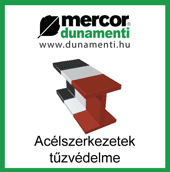
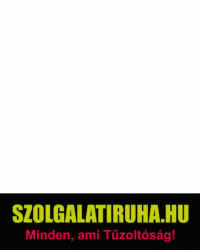

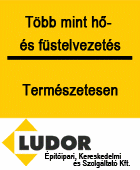
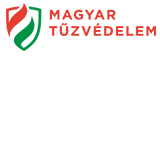
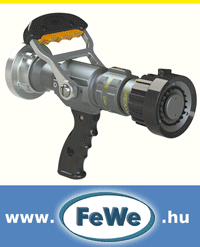
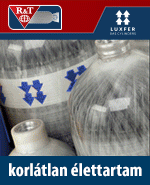
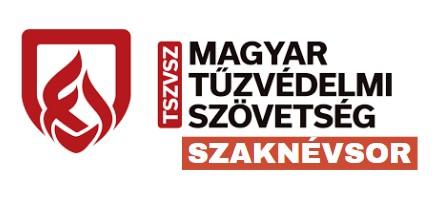
 2023 áprilisában harmadszor került megszervezésre a Tűzvédelmi Mérnöki és Katasztrófavédelmi Nemzetközi Tudományos Konferencia, amelyhez kapcsolódóan az előadásokat összefoglaló konferenciakötet, az ún. Book of Extended Abstracts (ISBN 978-615-01-8104-2) most letölthető honlapunkról.
2023 áprilisában harmadszor került megszervezésre a Tűzvédelmi Mérnöki és Katasztrófavédelmi Nemzetközi Tudományos Konferencia, amelyhez kapcsolódóan az előadásokat összefoglaló konferenciakötet, az ún. Book of Extended Abstracts (ISBN 978-615-01-8104-2) most letölthető honlapunkról.